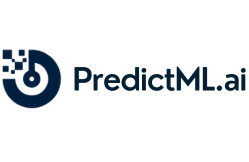GPU Calculator
AI Model GPU Recommender
A Critical Tool for AI Hardware Planning
Why Accurate Hardware Estimation Matters
The AI Model GPU Recommender provides essential guidance for one of the most challenging aspects of machine learning development: hardware planning. As AI models grow increasingly complex, selecting appropriate GPU hardware has become a critical but difficult decision with significant financial implications.
Precision in Technical Requirements
Our estimator brings precision to hardware planning through:
Accurate VRAM Calculation
The tool employs sophisticated algorithms that consider model architecture, size, batch size, and precision to calculate memory requirements with high accuracy. For large language models (10B+ parameters), our calculations account for KV cache scaling, attention matrices, and architecture-specific memory patterns.
Architecture-Specific Considerations
Different model types (Transformers, CNNs, etc.) have vastly different memory access patterns and compute requirements. Our tool adjusts estimates based on architecture, recognizing that transformers with their attention mechanisms have different scaling properties than convolutional networks.
Training vs. Inference Optimization
The recommender distinguishes between training and inference requirements, accounting for the additional memory needed during training for gradients, optimizer states, and activations. This prevents under-provisioning hardware for training workloads.
Precision-Aware Calculations
By factoring in different numerical precision options (FP32, FP16, INT8), the tool provides realistic memory estimates that can help developers make informed trade-offs between accuracy and efficiency.
Financial Impact and Cost Optimization
Accurate hardware estimation directly translates to significant cost savings:
Capital Expenditure Reduction
Operational Cost Management
Power consumption varies dramatically between GPU models (from 70W for a T4 to 700W for an H100). Our recommendations include power efficiency considerations that can result in substantial electricity savings over time.
Budget-Constrained Optimization
The tool factors in budget constraints to find the most suitable GPU option within financial limitations, maximizing performance per dollar.
Scaling Guidance
For very large models (20B+ parameters), the recommender provides guidance on multi-GPU setups and distributed training strategies, helping organizations plan their infrastructure scaling approach.
Real-World Value Proposition
The tangible benefits of the AI Model GPU Recommender include:
Risk Mitigation
Failed training runs due to out-of-memory errors represent wasted time and resources. Our accurate VRAM calculations help developers avoid these costly setbacks.
Time-to-Market Acceleration
By quickly identifying the optimal hardware configuration, the tool eliminates lengthy trial-and-error processes that would otherwise delay development cycles.
Hardware Utilization Optimization
The suitability score helps identify GPUs that will achieve high utilization rates without waste, maximizing return on hardware investment.
Strategic Planning Support
The detailed analysis provides organizations with insights for long-term infrastructure planning, helping them prepare for model growth and evolution.
Democratization of AI Development
By making hardware requirements more transparent, the tool helps smaller teams and organizations with limited AI experience make informed decisions about hardware investments.
Conclusion
In an era where AI model sizes are growing exponentially and hardware costs represent a significant portion of AI development budgets, the AI Model GPU Recommender serves as an invaluable planning tool. Its accuracy in technical requirements estimation and focus on cost-efficiency makes it essential for organizations seeking to optimize their AI hardware investments while ensuring their models have the resources needed to perform effectively.
